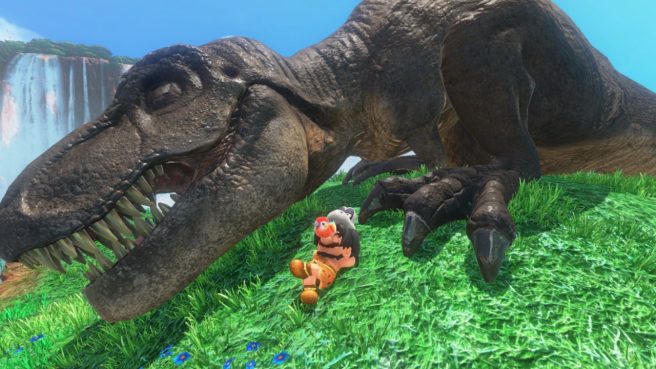8 years later, why Super Mario Odyssey is still a fantastic 3D platformer
At this point, there aren’t many people who haven’t played Super Mario Odyssey. It first released in late 2017 as one of the Nintendo Switch’s premier first-year titles, and it was quickly met with critical acclaim. The game came during a time when fans felt the series was starting to stagnate. In 2016, you had titles like Mario & Luigi: Paper Jam, Mario Tennis: Ultra Smash, Super Mario Run, and Paper Mario: Color Splash – and while most weren’t bad, they all carried that same corporate Mario feeling. Even Super Mario 3D World, which is now widely regarded as a great game, was criticized at the time for its linearity and similarity to Super Mario 3D Land. Super Mario Odyssey was essentially Nintendo’s way of saying that new and fresh ideas were back on the table for the series.
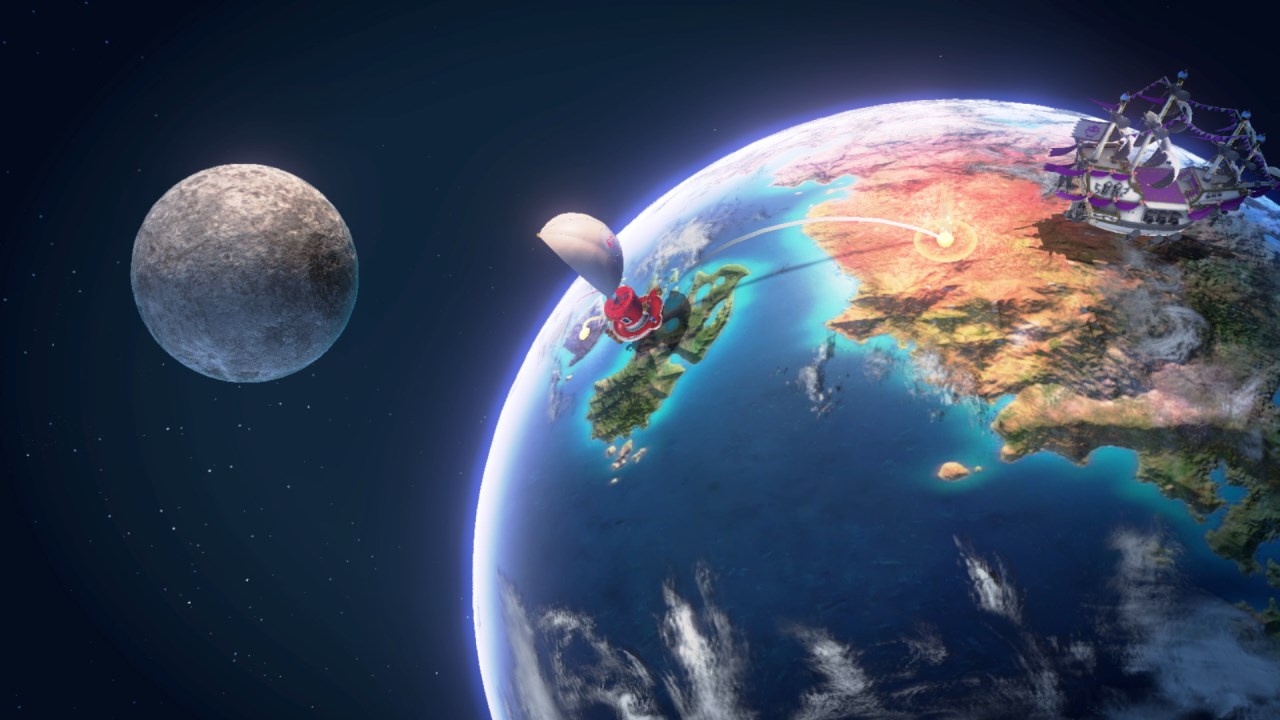
Super Mario Odyssey’s initial blowout trailer was a little over eight years ago, and right off the bat it showed off several of the game’s flashiest elements. Its signature capture mechanic was prominently featured in this new footage, and that combined with a glimpse of New Donk City plus the game’s popular theme song really helped fuel the hype at the time. Mario was back – fans were more excited than ever, and that excitement only increased as Odyssey’s release date drew ever closer. As I mentioned earlier, the game received glowing reviews when it finally released. That said, I do think that the public’s general opinion on the game has dwindled a bit in recent years – especially with the release of Donkey Kong Bananza as competition of sorts. So for today’s “review”, we’re taking everything from the past eight years into account, too. No nostalgia goggles here! (It’s weird that I can even say that about Super Mario Odyssey. How is it so old already?!)
Odyssey’s biggest claim to fame is absolutely its movement options. If you’ve watched any videos online, then you’ve probably seen how versatile Mario’s moveset is when combined with Cappy. The game’s signature cap throw alone adds a ton of depth – it can be used as an attack or even a platform to jump off of. And when you combine moves like Mario’s roll, Cappy’s directional throws, and Mario’s triple jump together, you can really start cooking. The skill ceiling in Super Mario Odyssey is incredibly high, and it’s also rewarding. The developers pretty much expect that a seasoned player will be able to access all sorts of areas that the average person will never see – in other words, they’ve placed plenty of coins in hard-to-reach areas just in case you do manage to get there. Not to mention, that’s only accounting for base Mario’s movement. Each of Odyssey’s captures has its own unique movement, and there are some vehicles to ride throughout the game as well. I always found New Donk City’s scooter really fun – it’s fast, silly, and kind of pointless, which in my opinion is a winning combination.
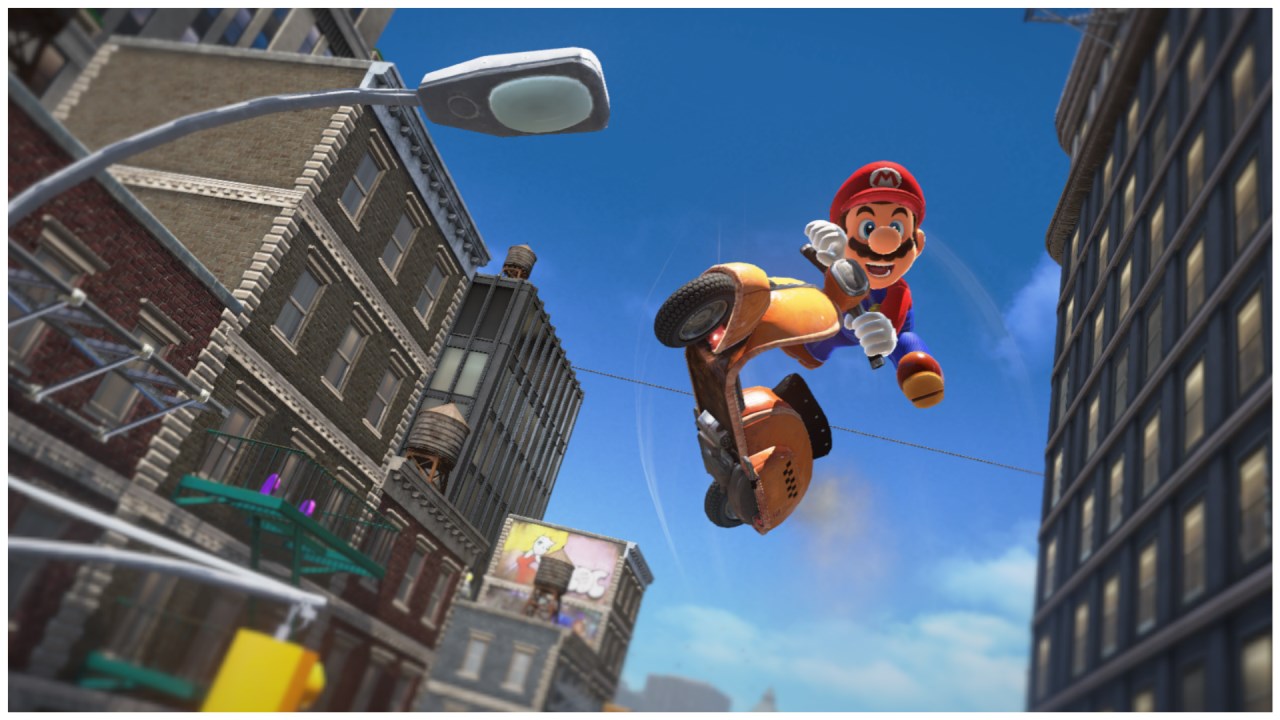
Speaking of captures, most of them are hit or miss. They’re inherently very simple, and each one only has one or two different attacks to use. Where Super Mario Odyssey shines, however, is how it makes use of these simple captures. Mario can capture a miniature tank to shoot at walls and enemies, or a stretchy Wiggler to easily weave between small platforms. The Luncheon Kingdom is based around the Lava Bubble capture, which lets Mario swim through lava and make high jumps. These captures are all simple by nature, yes, but they feel seamlessly integrated with their environment. I do think it would’ve been nice to have some more complex captures toward the end of the game – even the capture during the final sequence is pretty simple overall.
Capturing enemies does reveal one of Super Mario Odyssey’s greatest weaknesses, however: its forced motion controls. If you’re playing in docked or tabletop mode, this isn’t much of a problem. If you’re playing in handheld, however – which many people do – the game becomes awkward to control. Many different captures require that you shake your controller to perform an extra action. For example, you can’t attack at all in Cheep Cheep form unless you shake the controller to perform a spin. In handheld mode, this means you have to shake the entire console, which as you can expect feels unnecessary and tiresome. Furthermore, several of Mario and Cappy’s moves are locked behind motion – again, this isn’t really a problem in docked or tabletop mode, but it means any person playing in handheld mode is at a slight disadvantage of sorts. In a way, it kind of feels like the developers were desperate to force motion controls onto the players, and it definitely shows in the final game.
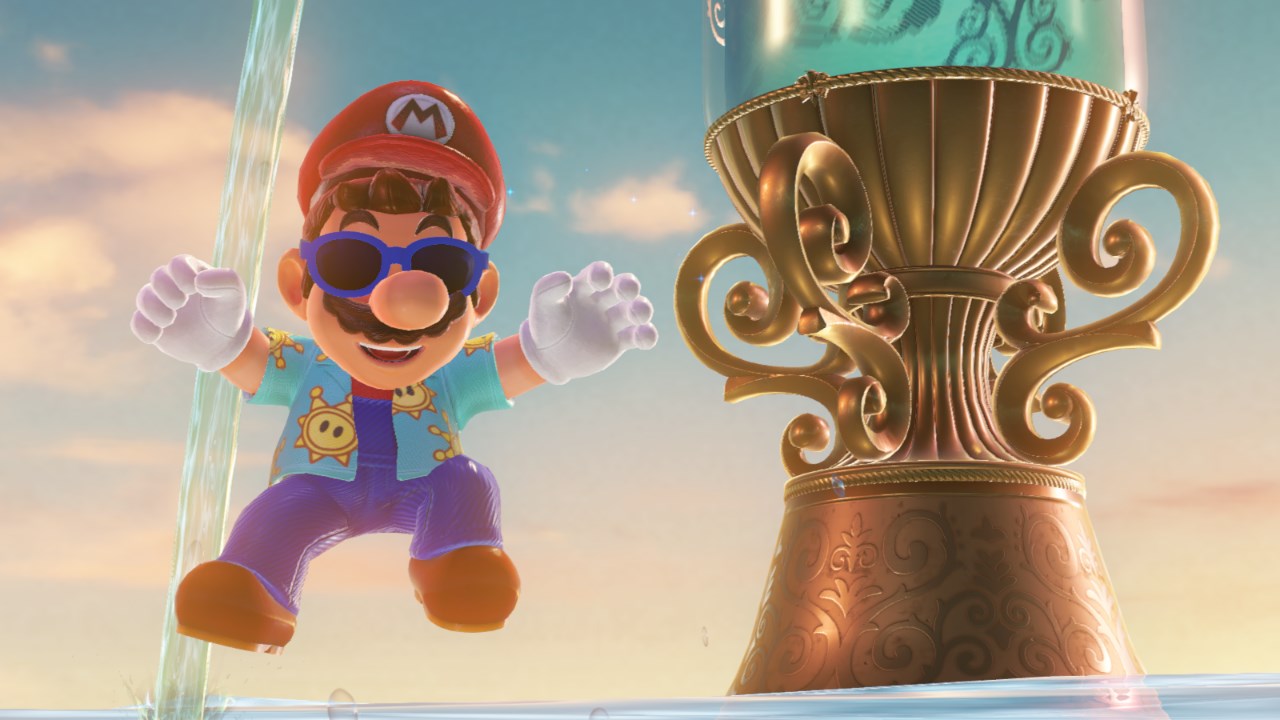
Swinging back around to good things, another one of Super Mario Odyssey’s biggest strengths is its boss battles. Generally speaking, the Mario series has just about always gotten these right, but a few of Odyssey’s battles feel particularly satisfying. Knucklotec, the Ruined Dragon, and the big Broodal mech in Bowser’s Kingdom were all highlights to me – none of them are particularly difficult, but they’re creatively designed and feel good to finally defeat. I don’t think all of the boss fights are winners – the Broodals, in addition to being lame and forgettable as characters, are reused a couple of times and grow just a little bit stale by the end of the game. Still, Odyssey’s boss battles are generally of high quality, and their post-game rematches make them more of a challenge.
Eight years later, I think the aspect of Super Mario Odyssey that holds up the best is its kingdom design. Compared to Donkey Kong Bananza, Odyssey’s kingdoms are smaller and more focused – broadly speaking, I like Bananza’s bigger levels better, but Odyssey’s kingdoms are in my opinion designed and themed better. For one, every single kingdom has memorable music. Each theme is super catchy and easy to recall after just a few minutes of playing, plus they have 8-bit remixes that play when you enter 2D sections. It’s seamless transitions like this that really help Odyssey come together. Some of my favorite music tracks are the Wooded Kingdom and the Underground Moon Caverns – the latter of which takes you by surprise with how unexpected it feels in the Moon Kingdom.
New Donk City also remains one of Super Mario Odyssey’s biggest highlights – in fact, I think the New Donk City Festival is the peak of the entire game. Odyssey’s initial reveal trailer showed New Donk City and had players wondering if the game was truly open-world. That’s not actually the case, and the city is actually somewhat small because it’s contained on its own little island, but it’s still great fun to explore thanks to all the tiny details hidden within. That’s a recurring theme for Super Mario Odyssey, too – not all of its kingdoms are big, but they’re very densely packed and are full of small secrets to discover. And by “secrets”, I mean “Power Moons”, which leads us into our next point.
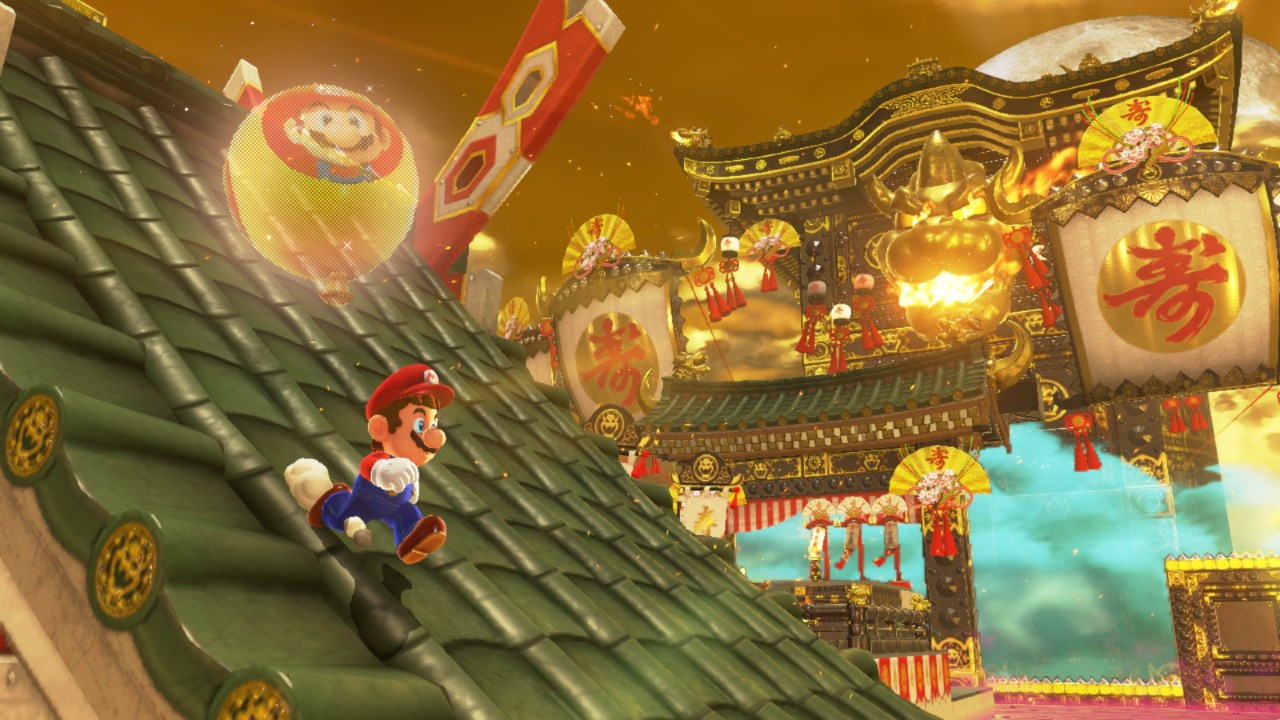
Earlier, I mentioned that the general opinion of Super Mario Odyssey has gone downhill just a bit. It’s still widely regarded as a great game of course, and I absolutely agree with that – but I think people are no longer blinded by the hype it created around its release and can see it for what it really is. Super Mario Odyssey is full of Power Moons. Since its kingdoms are so densely packed, you’ll often be able to find multiple of them in a row sitting out in the open. This is possibly the game’s biggest problem: it’s far too easy to find Power Moons and many of them are hidden behind purposefully repetitive tasks. Growing plants, figuring out Hint Art, and tracking down a single bird all feel like they’re meant to be tedious. Which means that most Power Moons are either too easy to get or too difficult, which isn’t a great balance. To add to this, Super Mario Odyssey requires that you collect a certain number of Power Moons before moving on to the next kingdom. I get why this limitation is in place, but I also think freedom is good – letting players decide how many Power Moons they want to get before moving on would be a better approach, in my opinion.
Super Mario Odyssey’s story also leaves something to be desired, though I don’t think anyone is really playing Mario for the story anyway. Regardless, I was underwhelmed by the game’s final stretch – the final boss is a reused Bowser battle with an extra bit of difficulty. The “true” final boss is probably the final stretch that happens after you take control of Bowser, and I do agree that’s one of the game’s many highlights – I just think it would have been enhanced with a better Bowser fight that wasn’t just like the one in the Cloud Kingdom. For a game that does most of its boss fights well, Super Mario Odyssey does kind of drop the ball at the last second. The good news is, though, that the game makes up for it by including the entire Mushroom Kingdom as a post-game world. That means there’s plenty to do even after you roll the credits!
In spite of its problems, Super Mario Odyssey is a fantastic 3D platformer, and certainly a must-play for anyone who somehow has avoided it up until now. It’s even better on Nintendo Switch 2, where it’s received a resolution bump and higher-quality textures as well. I do think the next 3D Mario game has a lot of opportunities to build on what Super Mario Odyssey got right. Given that we just got Donkey Kong Bananza, though, it might be a little while until we see the next 3D Mario come to fruition. In the meantime, what do you think of Super Mario Odyssey in the modern day? Do you think it lives up to the hype, or is it just “good” instead of “excellent”? Feel free to let us know in the comments down below.
